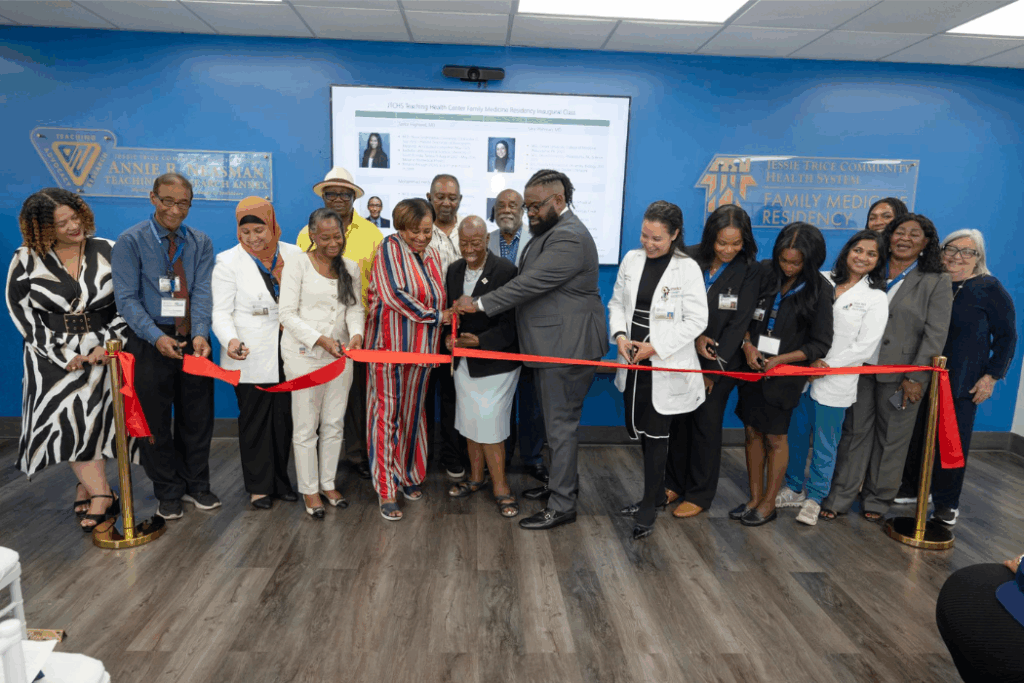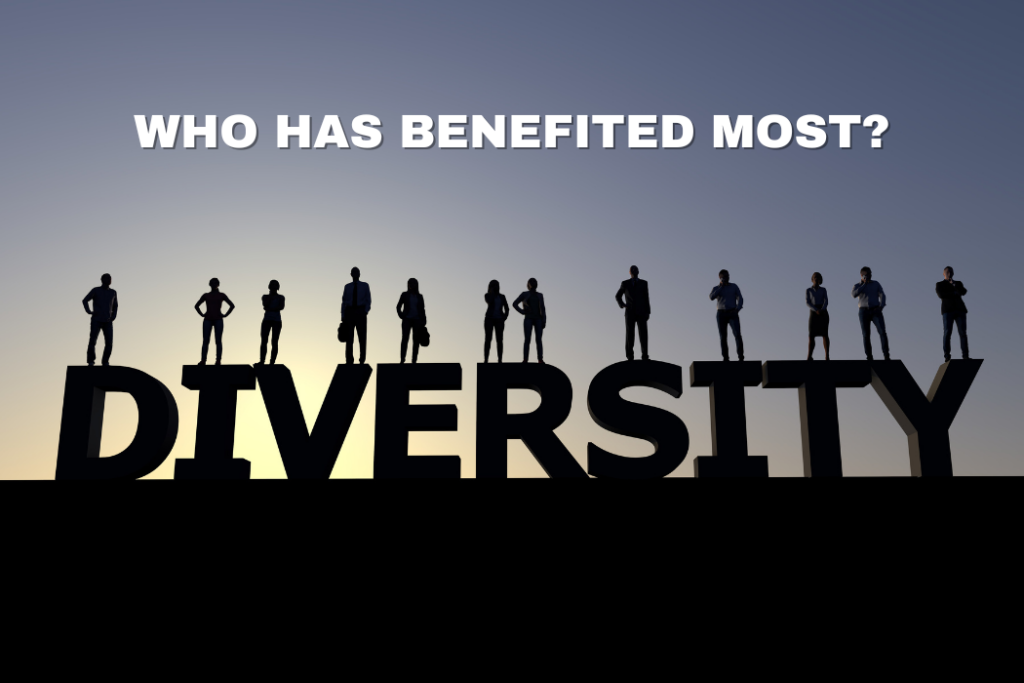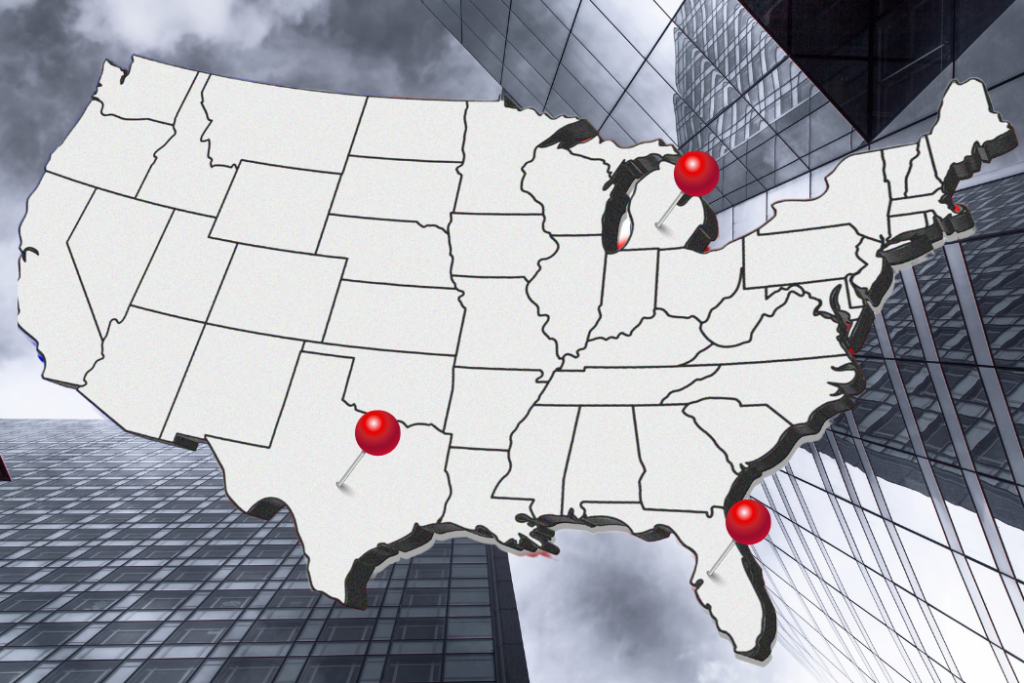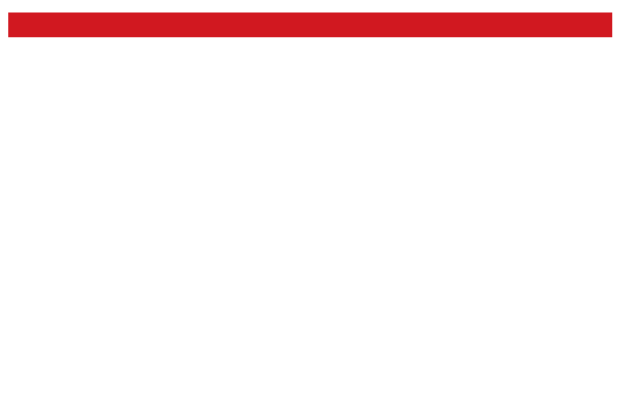
Allow me to share the unique perspective from which I view this topic. I have been blessed to have worked in the supplier diversity space for 45 years, including the last 40 years leading Ralph G. Moore & Associates (RGMA). During our 24-year tenure as the National Minority Supplier Development Council’s (NMSDC) lead training resource, RGMA trained more supplier diversity professionals than any other resource in the world. In 1997, RGMA worked closely with the legendary Dorothy Brothers from Bank of America and Susan Bari, the first president of the Women’s Business Enterprise National Council (WBENC) to develop the organization’s first strategic plan. The article, Raising the Bar, which was published by MBE magazine, introduced the RGMA Five Levels of Supplier Diversity Programs Maturity Model that has become the gold standard for benchmarking corporate supplier diversity programs and has been embraced worldwide. Advancing supplier diversity has been my life’s work and I’m honored to have the opportunity to share my perspective on the past, present and future of supplier diversity in this milestone issue of MBE magazine.
It is befitting therefore that we explore this important topic on the eve of 2020 as digital disruption is creating a new normal in terms of global business practices which dictates the need to take a long, critical look at the future of supplier diversity. To better understand the magnitude of the game changing breakthroughs that await us, let’s review some of the early milestones in the first 60 years of supplier diversity.
1960 – 1990: THE DAWN OF SUPPLIER DIVERSITY: “THE RIGHT THING TO DO”
The 1960s
The 1960s was one of the most transformational decades in the history of minority business development. From the end of the Civil War in 1865 to the 1950s, strict segregation laws in the South coupled with de facto segregation practices in the North divided America into two economies.
The white economy included major corporations and the downtown shopping districts; and, the black economy developed hundreds of self-contained “black business ecosystems” in every city that had a substantial black population. The black business ecosystem was self-contained: grocery stores, hospitals, schools, insurance companies, newspapers, movie theaters, funeral homes, whatever the need, a black entrepreneur would pounce on the opportunity to serve their community and earn a living.
As segregation subsided in the North and after a series of court “victories” impacting basic civil rights throughout the nation, there was an unforeseen outcome as blacks started “going downtown” to spend money in the white-owned establishments. This resulted in black businesses losing customers and many went out of business, which caused a spike in unemployment in most black communities.
In the summer of 1965, high unemployment coupled with the outrage over racial discrimination sparked a major riot in the Watts section of Los Angeles. More riots followed in many major cities in the summer of 1967. The unrest continued after Martin Luther King, Jr. was assassinated on April 4, 1968. The black community was angry and broke.
As the series of civil rights victories continued in the courts, there were many milestones in 1968, including the first minority business opportunity fair hosted by Western Electric (AT&T) in Chicago. This encouraging outreach by major corporations was accompanied by the emergence of a new activism across the nation focused on securing jobs and contracts with major corporations. In Chicago, Operation Breadbasket was led by brilliant young activist Reverend Jesse L. Jackson. I was “baptized” into the movement in 1968 when I joined marches led by Rev. Jackson to protest the A&P grocery chain’s refusal to hire blacks in key positions or contract with black businesses.
The Black Capitalism Program
Richard Nixon became president on January 20, 1969 and despite the pressure associated with his promise to end the Vietnam War, he issued Executive Order 14458 on March 5, 1969, which was designed to increase economic opportunity for black and other minority entrepreneurs. He also invited corporate America to help by “giving blacks a piece of the economic pie” through contracting with small minority businesses. Nixon’s Black Capitalism Program planted the seeds that minority business and supplier diversity advocates are still harvesting today including:
- Impetus behind the growth of “Minority Purchasing” Programs which became supplier diversity programs;
- Establishing a minority business lending program at the U.S. Small Business Administration (SBA);
- Created the atmosphere for the enactment of Public Law 95-507 – Led by Congressman Parren Mitchell which established the utilization of minority and small, disadvantaged businesses by most government contractors;
- Establishing the Minority Enterprise Small Business Investment Company (MESBIC) Program which incubated Reginald F. Lewis’ historic deal and created the model that produced many of today’s minority owned private equity firms;
- The initial funding of NMSDC.
The 1970s
The Black Capitalism Program fueled a renaissance in minority business development throughout America in the 1970s. The impact of Public Law 95-507 had a dramatic impact on the number of diverse businesses securing government contracts and thousands of minority entrepreneurs used SBA loans to open retail stores, mostly in minority communities across the country. This expanded minority entrepreneurship, created thousands of successful first-generation minority business owners and resulted in a measurable increase in the number of black middle-class households.
Although NMSDC was founded in 1972, the number of minority corporate suppliers remained relatively low for most of the 1970s due to the limited number of major corporations that had established minority purchasing programs, and there was reluctance by most corporations to do business with minority-owned businesses that lacked corporate experience. Toward the end of the decade, the increased number of minority business enterprises (MBEs) utilizing the training services available at the regional NMSDC offices, coupled with additional corporations establishing minority purchasing programs, resulted in an uptick in the number of successful minority corporate suppliers.
The 1980s
AT&T, IBM, and other early champions of minority purchasing programs continued to increase their minority spend while the overall level of contracting with minority businesses remained relatively flat in the early 1980s. This was due to the perception by most corporations that this activity was a give-away social program and the continued reluctance by corporations to engage minority businesses that lacked corporate experience. The breakthrough occurred when Ford, General Motors, and Chrysler joined forces to advance minority purchasing within the automotive sector. This was the first major industry group initiative that was led by C-suite executives to contract with minority businesses.
1986: Hedy Ratner established the Women’s Business Development Center (WBDC) in Chicago, which became the most impactful women’s business enterprise (WBE) advocacy organization in the U.S. WBDC also was the model for establishing WBENC in 1997. WBDC continues to function as a Regional Partner Organization in the WBENC network.
1988: NMSDC hires Harriet Michel and her vision and tenacity transformed the supplier diversity value proposition in corporate America and elevated supplier diversity from being the “right thing to do” to the “smart thing to do.”
1990 – 2020: THE EVOLUTION OF SUPPLIER DIVERSITY: FROM PROGRAM TO PROCESS
The 1990s
Corporate America’s response to the compliance provisions of the federal government’s subcontracting requirements continued to be the driving force for generating contract opportunities for diverse businesses throughout the 1990s. However, the emergence of NMSDC and the creation of WBENC made the 1990s a transitional decade as the private sector was finally embracing diverse suppliers in a meaningful way.
A brief review of the impact that advocacy organizations made during the 1990s follows:
NMSDC
During Harriet Michel’s 22-year tenure as president, NMSDC contributed many of the best practices that continue to impact supplier diversity today. In addition, , NMSDC made the following breakthroughs during the 1990s:
- Introduced the NMSDC Growth Initiative, which enabled MBEs to secure equity capital without losing their MBE certification
- Established NMSDC’s Global Link program that led to the founding of sister agencies in South Africa, China, United Kingdom, Canada, and Australia
- Established the NMSDC Program Managers’ Seminar which has been the most effective training forum in supplier diversity and has produced a generation of savvy program managers
WBENC
In 1997, WBENC was founded to service the needs of women corporate suppliers. WBENC has enjoyed many milestones since their founding, including convincing the major automotive companies to include women in their supplier diversity programs.
The 2000s
The first decade of the 21st century had several important milestones related to supplier diversity. In 2001 the Billion Dollar Roundtable (BDR) was founded and they quickly raised the bar on best practices in supplier diversity. There was a notable increase in the number of diverse businesses that broke through the billion-dollar mark for annual sales signaling the advent of a new era for scalable diverse suppliers.
The 2000s will also be remembered as the decade of the enhanced supplier diversity business case, which highlighted supplier diversity’s contribution to shareholder value in addition to government compliance.
2010 – Present
This decade opened with a focus on the ROI (Return on Investment) of supplier diversity, which was well received by C-suite executives, but the pivot from ROI to economic impact as the value proposition was a mistake. Corporate purchase decisions are based on value, not economic impact. Economic impact is the byproduct of win-win relationships between outstanding diverse suppliers and savvy corporations. Fortunately, the emphasis on diverse supplier value and contribution to operational excellence has returned as we enter 2020.
2020-2050: EMPOWERING SCALABLE DIVERSE SUPPLIERS TO
TRANSFORM ECONOMIES AND COMMUNITIES
Words Matter
The time has come to retire the term supplier diversity. RGMA is recommending replacing supplier diversity with, B2B Diversity. B2B (business to business) diversity captures all aspects of third-party transactions involving suppliers and service providers including outsourcing, technology partners, professional services, infrastructure, sports sponsorships, value added resellers, logistics, R&D and strategic alliances.
RGMA defines B2B diversity in the following manner:
The practice of integrating diverse suppliers, service providers and business partners throughout the process of procuring goods and services essential to the execution of corporate strategy.
Aspirations
The disruptive marketplace dictates the need for disruptive strategies. B2B diversity thought leaders must rethink the role of diverse enterprises in the marketplace. We must go beyond aspiring for organic growth of diverse suppliers through additional contracts and focus on the acquisition of hundreds of non-diverse companies to fuel the exponential growth of B2B diversity. We must also develop strategies that go beyond impacting supply chains and focus on impacting entire corporate value chains. Let’s take advantage of this convergence of changing demographics and a disruptive marketplace and create a new normal where diverse suppliers, service providers, and business partners are coveted participants in every aspect of corporate strategy development and execution.
Geographical Footprint
Savvy CEOs of global corporations are realizing how dysfunctional it is to execute a North American-only B2B diversity strategy within a global sourcing strategy. World-class corporations are following the lead of IBM, which has the most impactful global B2B diversity strategy among multinational corporations.
The Impact of Demographic Disruption on B2B Diversity
It is a fact that at some point during the next 20 to 30 years, the combined population of ethnic minorities, African Americans, Asian Americans, Hispanic Americans, and Native Americans, will become the majority of the U.S. population. Because of this demographic disruption, experts are predicting substantial societal impact in a variety of areas including education, housing, and healthcare. The changing demographics will also have a disruptive impact on the future of B2B diversity. That said, there is a need for a transformational strategy that impacts every aspect of today’s approach to B2B diversity as ethnic minorities transition from the minority population to the majority population.
The Impact of the Women’s Movement on B2B Diversity
As the husband of a phenomenal woman who is an entrepreneur, actor, and public speaker and as the father of a millennial daughter who resides in West Africa, consulting with startup businesses, I’m leading the cheers for the women’s movement. Insightful Fortune 1000 corporate leaders have implemented several WBE-focused B2B strategies that tap into the critical source of talent and new ideas. It is essential that corporate leaders embrace WBEs as they contribute to enhanced performance and elevate the value of the corporate brand.
THE EXPANDED ROLES OF KEY STAKEHOLDERS IN THE FUTURE OF B2B DIVERSITY STRATEGIES
B2B Advocacy Organizations
The level of transformation required over the next 30 years in this disruptive marketplace will be led by the national advocacy organizations. We offer the following recommendations and observations as we reviewed the roles that BDR, NMSDC, and WBENC will play in shaping the future of B2B diversity.
Billion Dollar Roundtable
Twenty-eight corporations with the leading B2B diversity strategies in the world are the hosts, and a lineup of presenters that are the most respected thought leaders in the field have made the BDR Summit the most important B2B diversity forum worldwide. An added bonus is that BDR is the only major advocacy organization to advocate for minority, women, veteran, disability-owned, and LBGT suppliers and service providers under one combined mission. In addition, BDR invites several corporations that have made BDR membership an aspirational goal as well as the leading diverse businesses and top B2B consultants to attend. Our recommendation is for BDR to consider assuming the expanded role of the B2B diversity think tank as there is a need for a plethora of innovative strategies to advance B2B diversity.
NMSDC
We are excited about the passion and fresh ideas from the new leadership at NMSDC. NMSDC will play a pivotal role in capitalizing on the expanded opportunities resulting from the demographic disruption. As we enter the next phase of B2B diversity transformation, RGMA looks forward to supporting NMSDC’s leadership in developing enhanced B2B diversity strategies.
Currently, NMSDC has four size classification categories for MBEs. We are recommending an increase of that number to six, which will create three categories for scalable suppliers rather than the current “over $50 Million” category (below). This change will also facilitate the development of capacity building and financing strategies more tailored to the specific size and growth strategy of emerging MBEs.
| Class | Annual Revenues |
| Class 1 | Less than $1Million |
| Class 2 | Between $1 Million & $10 Million |
| Class 3 | Between $10 Million & $50 Million |
| Class 4 | Between $50 Million & $250 Million* |
| Class 5* | Greater than $250 Million* |
| Class 6* | Publicly Traded* |
| *Recommendation |
WBENC
WBENC’s leadership has done an extraordinary job of servicing the various stakeholders with innovative programming and capacity-building programs. I’m especially excited about the impact of WBENC’s collaboration with Planet Mogul, which is a program that develops the next generation of entrepreneurs, innovators, and workforce and community leaders by providing an intellectual and interactive learning environment for elementary and middle school students. This is truly planting the seeds, which will help develop the next generation of business savvy citizens which is essential to the future of B2B diversity.
Major Corporations
- The risks associated with recasting the B2B value proposition to incorporate the potential impact of disruptive demographics on the supply chain and marketplace requires that this process is owned by a C-suite executive.
- The disruptive marketplace also requires a review of where the B2B diversity strategy is housed within your organization. Yes, B2B diversity must always have a close relationship with Strategic Sourcing and Procurement, but there are advanced B2B diversity strategies that are housed within Diversity & Inclusion, Marketing and Community Engagement.
- If your CEO is one of the 700+ CEOS who has signed the pledge at the CEO Action for Diversity & Inclusion, it is essential that they follow the lead of many of these CEOs and embrace B2B diversity as part of your corporation’s Diversity & Inclusion commitment.
Emerging Diverse Suppliers
CEOs of emerging diverse businesses must focus on the following priorities to cultivate and maintain strategic partnerships with Fortune 1000 corporations:
- Develop a compelling value proposition focused on innovation and value,
- Incorporate a growth strategy within your business plan,
- Develop a global go-to-market strategy,
- Identify potential acquisition targets and/or collaboration partners,
- Cultivate relationships with financial institutions and private equity funds that could underwrite a potential acquisition,
- Establish an advisory board.
The marketplace is demanding specialization with a focus on value, risk mitigation, and innovative solutions.
State and Local Governments
Enlightened public sector leaders will position state and local governments to play the following roles:
- Integrate B2B diversity into all transactions that involve tax breaks and development projects
- Follow the best practice by the NYC Controller and require publicly traded corporations vying for an investment by the New York City Pension Fund to have a supplier diversity program.
Transforming Communities
The most important outcome from the new strategies required to capitalize on the next phase of B2B diversity is the transformation of communities. Creating thousands of scalable diverse suppliers will create millions of jobs. Jobs create stable households and stable communities, which reduce stress and violence and enhances the business climate and livability of communities.
The Role of Foundations
Visionary foundations like the W.K. Kellogg Foundation, Ford Foundation, and the Surdna Foundation have made strategic investments in minority business training programs and minority supplier capacity building with a focus on the transformational impact on communities. The next phase of B2B diversity will need more foundations to invest in diverse business capacity building.
Summary
If you are reading this article, you have a role to play in the next generation of B2B diversity. If diversity is America’s greatest asset, the ROI on B2B diversity is going to be America’s best investment. Allow me to close with a quote from Andy Butler of Procter & Gamble on the importance of supplier diversity and its impact on consumer behavior, taken from an excerpt from the History of Supplier Diversity video. The video is available on the NMSDC website:
“If we can elevate this work, if we can make it more visible and aware and if we can think through this mindset not just as supply chain professionals, but also as marketing professionals, as communication professionals and at the end of the day as business professionals and business leaders, we could be on the forefront of not just making supplier diversity not just more important than it’s ever been, but the single leading and driving force for consumer behavior in this country and across the world.”
Amen! Let’s get started.













